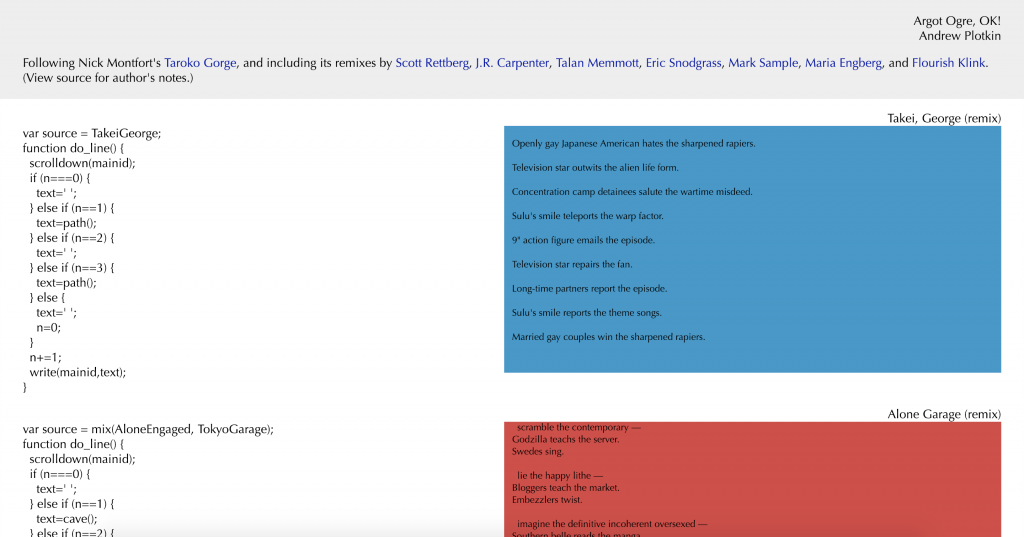As with all works of Electronic Literature, these variations or versions of Nick Montfort’s “Taroko Gorge” are born digital. Through the use of javascript, each version including the original implement if/else conditionals, variables and arrays with a variety of words to alternate the contents of the poem as lines appear.
Given Montfort’s note within the code granting permission for the copying, modification and redistribution of the software, as well as the number of other known E-Lit authors including Talan Memmott, Scott Rettberg, and Judy Malloy, among others, brings one to draw the conclusion that perhaps this also played into a sort of collaboration among the Electronic Literature community or an experiment of sorts.
Each text provides a different meaning based on not only the subject or focus of the version, but also the words that appear as they appear, creating an almost individualized experience that changes each and every time it is read. It is poetry so the meaning is up to individual interpretation. For instance, J.R. Carpenter’s “Whisper Wire” follows a similar pattern to Montfort’s “Taroko Gorge” but instead focuses on electricity and sound and how noise travels.
Andrew Plotkin’s “Argot Ogre, OK!” takes one of the other remixed versions and shows simultaneously the work’s process along the right side of the browser while also showing the actions the background code is taking with the conditionals along the left side.

As Plotkin phrases it, the process he implements is,
Combining the word-lists of any two poems;
Mutating the stanza schema.
In this version of the work, he shows the effect of the conditionals in numerous ways but places more emphasis on what lays beneath. As if exposing the skeleton instead of looking at the surface of a person’s skin.
Sources:
https://nickm.com/taroko_gorge/
https://nickm.com/taroko_gorge/whisper_wire/
https://nickm.com/taroko_gorge/along_the_briny_beach/
https://nickm.com/taroko_gorge/argot_ogre_ok/
